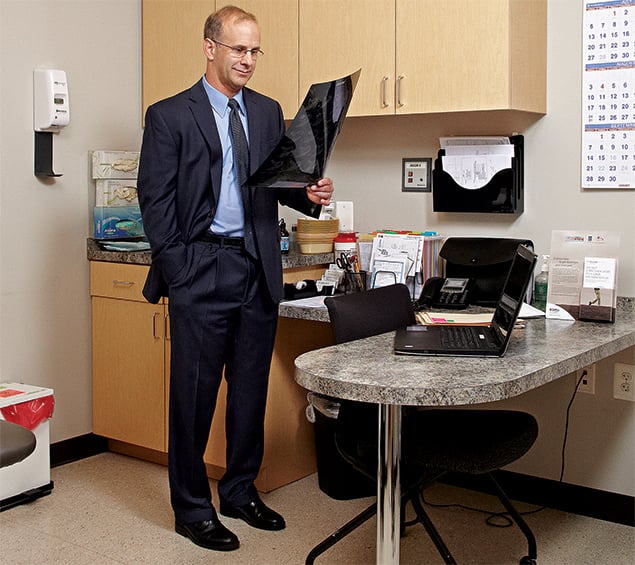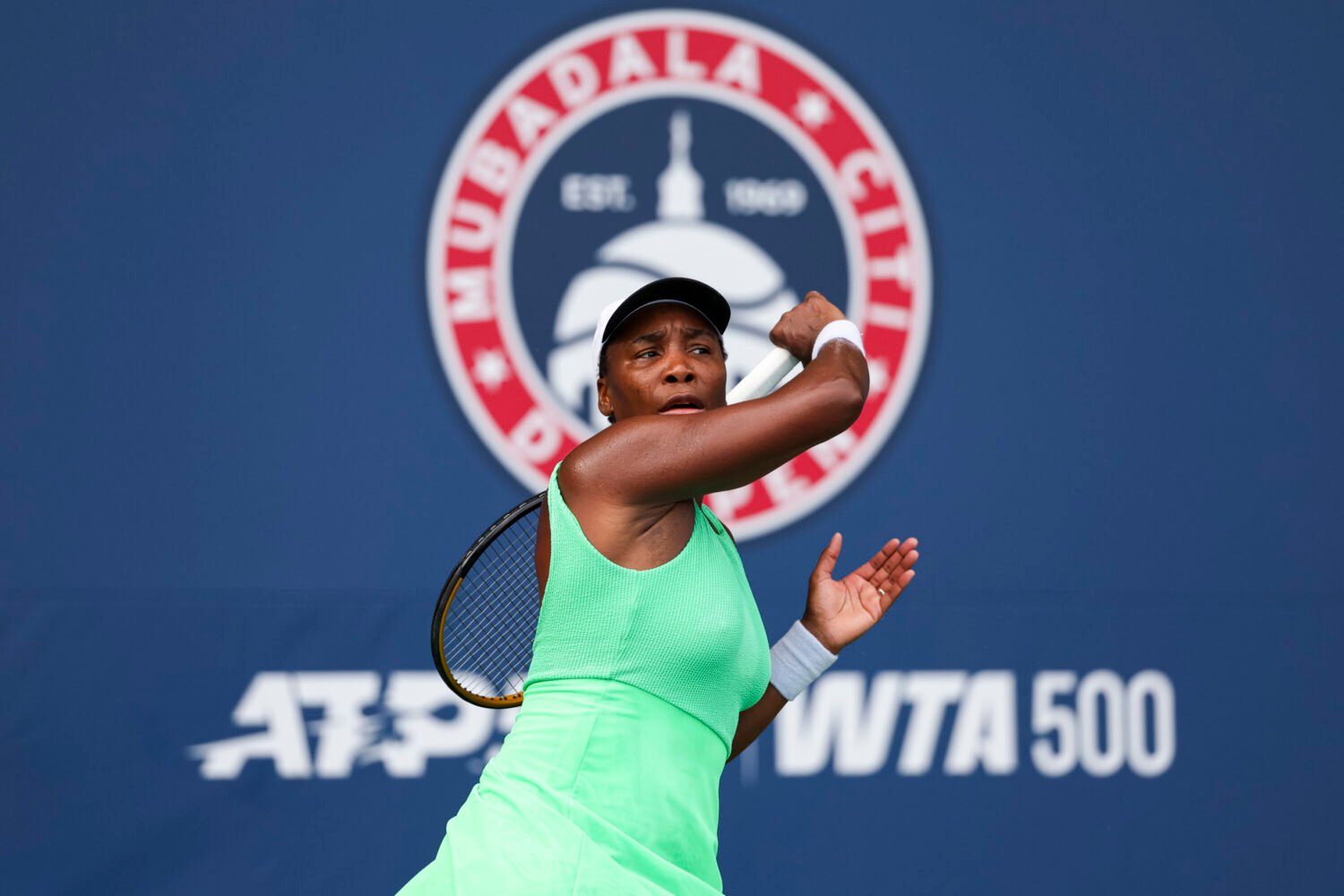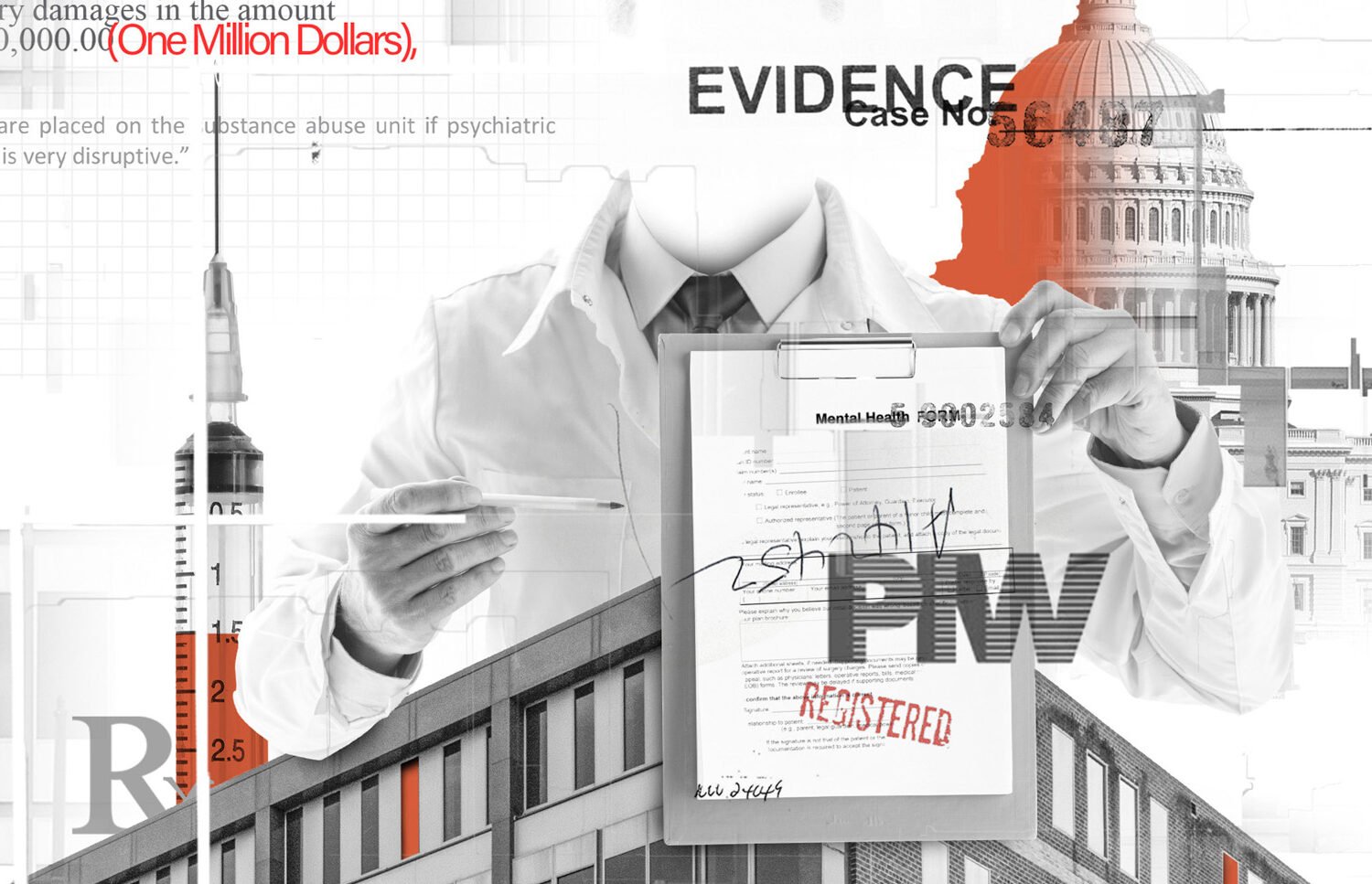Beth McCann was jogging on the W&OD Trail in Arlington a few years back when severe pain literally stopped her in her tracks.
A registered nurse at the George Washington University Medical Faculty Associates, McCann had been an almost daily jogger for 30 years. When training for a marathon (she runs about one a year), she can log nearly 50 miles in a week.
On this October day—she had been training for the Marine Corps Marathon—she barely managed to walk home. A visit to a sports-medicine specialist revealed a stress fracture in her lower back. She ended up on crutches for six weeks and was unable to run for a year.
The specialist McCann saw was Kenneth Fine of the Orthopaedic Center, which has locations in DC and Rockville. Dr. Fine, she says, made her realize the importance of rest (she hadn’t been sleeping well before her injury but continued to be on the go) and of listening to her body during exercise (she had ignored aches and pains before the fracture).
McCann started getting deep-tissue massages every two to four weeks to help with circulation to the injured area. During the year she couldn’t run, she took spinning classes and lifted weights; now that she’s able to run again, she still takes days off from jogging to spin and weightlift.
“I’m a push-the-envelope kind of athlete, and that will get you in trouble, as I have found out,” says the 54-year-old Arlington resident.
It’s a common problem in Washington. As CrossFit, Tough Mudder competitions, and marathons are becoming increasingly popular, overuse injuries are taking a toll.
“Washington has a high number of people who are very motivated and disciplined, sometimes to the point of being obsessive, which can lead to over-exercising,” Fine says. While he notes that exercise is important in managing or staving off stress and illness, an obsession with exercise “leads to our area having a very high fitness level but to more overuse injuries. You will see the orthopedic surgeon more often, but you’ll see other doctors less often.”
When to Consult a Specialist
As the name suggests, sports-medicine doctors study and treat athletic injuries such as ligament and cartilage tears, stress fractures, and muscle and tendon strains.
The basic treatment for minor or moderate sports injuries has remained the same for years—ice for the first 48 hours paired with 72 hours of rest and elevation. How do you know when an injury is severe enough to see a doctor? One key sign is if you can’t bear weight on the affected area.
“If it hurts you a little bit to walk, it’s okay to wait and protect yourself and not exercise,” says Dr. Chris Annunziata of Commonwealth Orthopaedics in Arlington. “Give it up to a week and you should be getting better with ice, elevation, and rest. If it doesn’t get better, go to the doctor.”
While physicians not trained in sports medicine might treat just the acute injury, a sports-medicine specialist will also try to determine what led to the injury—and then to correct any problems with the goal of maximizing future performance.
“If someone is a long-distance runner, do they have inflexibility of their muscles or an imbalance of strength?” Annunziata says. “We try to direct care to affect those causes.”
Sports-medicine specialists are trained to get you back on your feet as safely and as soon as possible and to keep you moving even during treatment.
Says Annunziata: “If a runner comes in with knee irritation, we will allow them to do swimming, elliptical training, and cycling to improve lower-extremity flexibility around the knee and hip.”
From Dry Needling to Plasma
A sports-medicine doctor usually will do one of several things to treat an injury. He or she may prescribe anti-inflammatory pills or give an anti-inflammatory shot. If trained as an orthopedist—many othopedists have experience with sports-related injuries—the doctor will perform any necessary surgery.
Depending on the injury, a sports-medicine doctor may send you to physical therapy. Some physical therapists are also certified in sports medicine. As with any sports specialist, their aim is first to identify the reason the injury may have occurred.
“I look at how you are moving—are you having neck pain when you turn your head?—and try to figure out the source of your pain,” says Stacy King, owner of Aspire PT & Wellness in Bethesda, who is an orthopedic clinical specialist.
Once the problem is identified, a physical therapist will, among other things, give a patient stretches and corrective exercises to improve flexibility and strength.
Dry needling is a new trend in therapy that, like acupuncture, involves inserting needles into the body. While acupuncture follows a set of points and meridians, dry needling targets trigger points in muscles that are causing pain. The goal is to get a twitch response, which feels like a muscle cramp and which ultimately relaxes the muscle.
“It’s a faster form of treating trigger points,” King says. “The patient often feels the benefits quickly—some feel results immediately.” The average number of treatments is four, and side effects can include muscle soreness and bruising.
A physical therapist must be trained to do dry needling, through an organization such as Kinetacore, and this treatment isn’t for everyone. Someone who is in the first trimester of pregnancy, has a clotting disorder, or is within six weeks of having surgery shouldn’t receive dry needling.
Other therapies are on the horizon for treating serious or lingering sports injuries—including those that rely on the human body, such as plasma and stem cells, to accelerate healing.
PRP, or platelet-rich plasma, therapy is one such treatment. A patient’s own blood is centrifuged, separating it into layers. The platelet-rich layer, full of growth factors, is then injected back into the patient.
Although the American Academy of Orthopaedic Surgeons hasn’t yet validated PRP as a scientifically proven method of treatment—it’s being studied—Fine says he and other doctors are using it.
“I have used it in cases such as elbow tendinitis and plantar fascitis where patients have not improved with standard treatments,” he says. “The pros are that it makes intuitive sense to inject growth factors to try to stimulate tissue to heal, and there are some studies showing its benefits. The cons are that we really don’t know at what concentration they would work best. There are many studies that show no improvement from PRP.”
While Fine says he hasn’t seen serious negative side effects, possible ones include infection, blood clots, nerve pain or injury, skin discoloration, and worsening of symptoms.
Other treatments in the experimental stages include stem-cell therapy and human-growth-hormone injections into joints. “Stem cells are being used, but they are in the very early stages, so there really are no good scientific articles,” Fine says.
Choosing a Doctor
Many family physicians now are very well versed in sports medicine; you might check if your primary-care doctor is board-certified in the field. Other medical specialties allow physicians to get a Certificate of Added Qualifications in sports medicine. Orthopedic surgeons, for example, can do a fellowship and take a written test through the American Board of Orthopaedic Surgery to become certified in sports medicine. The American Board of Family Medicine offers a similar test for family doctors. Licensed physical therapists—who don’t have an MD—can also become board-certified through the American Board of Physical Therapy Specialities.
“It’s a sexy thing to tell your patients you’re a sports-medicine specialist,” Fine says, “but not everyone is certified.”
Want to see a sports-medicine practitioner? You can find certified specialists at certificationmatters.org.
To find recommended sports-medicine specialists, orthopedists, and rehabilitation doctors, see our Top Doctors list.
This article appears in the October 2014 issue of Washingtonian.


















